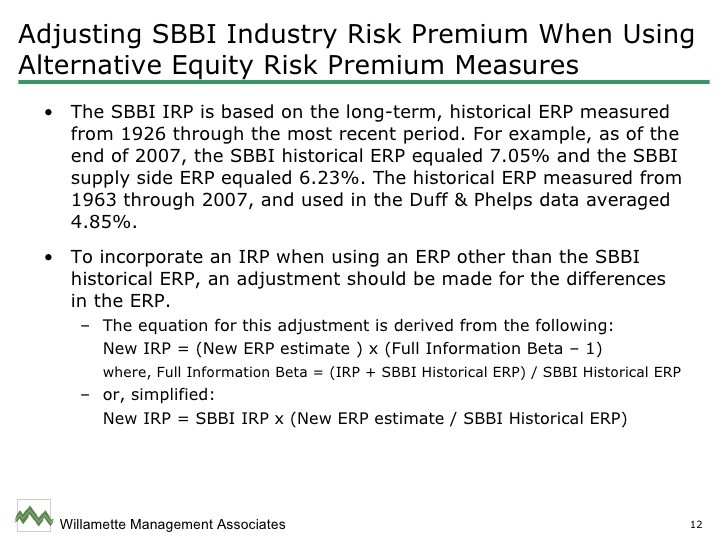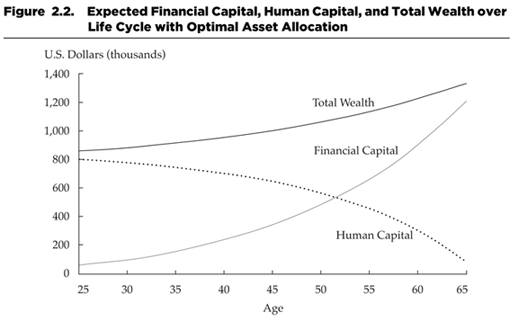Ibbotson Equity Risk Premium Still Out There
Post on: 4 Август, 2015 No Comment

Have faith, says keynote speaker for 2011 Investment Innovation Conference.
A s a scheduled speaker at this falls Investment Innovation Conference in Bermuda (November 16 – 18), Roger Ibbotson, Professor of Finance at the Yale School of Management, will be sharing his views on the risk premiums that exist in todays markets. In advance of the conference, we asked him a few questions about the evolution and structure of these premiums. To find out more about Rogers presentation and the Investment Innovation Conference, click here .
Q: How important is the equity risk premium? In the past decade its been very low.
A: Its been almost zero. The thing is youve got to expect that once in awhile. One of the words in the equity risk premium is risk. So its not a sure thing. You have to anticipate that there are going to be some years, and even some decades, when you dont get it. You didnt get a positive return in the 1930s.You didnt really get it in the last decade. You get it in most decades, though.
On a go-forward basis, you have to presume that in most decades youre going to get this. And actually its a positive return in about 70% of the individual years. So maybe it wont be 70%, but I would say two-thirds of the years youre going to have up markets. So its not something to be ignored.
Do you have a prospective estimate of the equity risk premium? Where will it be in the next decade?
Ive often dismissed the historical way of doing it – particularly in the early 2000s – when we were all thinking that it might be dangerous to extrapolate. I came out with a paper, “Long-Run Stock Returns: Participating in the Real Economy.” We looked at alternative ways to measure the premium. At the time, we got a substantially lower estimate of the premium [than the historical rate]. Let me say that after the drops in the market, the historical rate isnt that bad of an estimate today. Through 2010, if I go from 1926 to 2010, the stock market had a 9.9% compound return and government bonds had a 5.5% return. If you look at that difference, its 4.4%, and thats not an unreasonable estimate of the premium in todays market. It may have been unreasonable in 2000 because the spreads would have been bigger at that time. But now after the drops in the market, I think thats not an unreasonable estimate.
Over the past decade, you and others have discovered new premiums, like the liquidity premium. What does that involve?
Im actually just looking at publicly traded stocks and buying the less liquidly traded public stocks. There is a surprisingly high premium associated with buying the less-liquid stocks.
Are those small caps or just the bottom end of the S&P 500?
Youll find this premium in small caps and large caps, in value and in growth. Youll find it any different part of the market. Its basically something thats additive to any other premium you might find. If you look at the less liquid value stocks versus the most liquid value stocks, you’ll find a very substantial premium. Actually, youll find that the premium has compounded at much as 8% per year, for value stocks or growth stocks.
How long does it take to realize that premium?

Its on average every year. But its like all of these premiums, like the equity risk premium. You dont realize it every year or every decade. But you realize it most of the time. So its not so much how long you get it pretty much all along the way but in order to be sure that youre going to get it, you may have to wait a decade. And even a decade doesnt guarantee it, just like the equity risk premium, as weve just seen.
Where do the size, value and momentum premiums stand today?
I believe that all the premiums will continue to exist. The one that is most shaky is the momentum premium, because that has the least economic foundation to it. Its almost more of an alpha then a beta play, whereas the others are more beta-oriented. The reason why there are premiums in the market is because theyre basically paying people to do something they dont want to do. You dont want to buy stocks when theyre risky, youd rather buy bonds. You dont want to buy distressed value companies when could buy the exciting growth companies, and you dont want to buy small caps when its so much easier to buy large caps. And you dont want to buy the less liquid stocks; youd rather buy the most liquid stocks. The crux of this in every case is that you, as an investor, are being paid to do something that you dont want to do. Thats why these premiums dont go away.
With bonds, you look at horizon and default premiums. What are these?
The horizon premium is no more than an interest-rate premium its the premium you get for buying longer-horizon bonds rather than shorter-horizon bonds. Youre locking in an interest rate over the period. That means the bond investor has a lot of price fluctuations on the bond. Theres an imbalance here, essentially because most investors would prefer to buy shorter-term bonds, but issuers want to issue long-term bonds. Here again, its the same kind of concept as with all these premiums. What do you do when the issuers want to issue long-term and the investors want to buy short-term. The only way this works is if issuers, in this case, offer a higher yield, a higher expected return for investing in long-term bonds. Thats the horizon premium. The default premium is the same thing because we dont want to buy these bonds that have higher default risk. Again, its getting the investors to buy the things that they wouldnt have wanted to buy and inducing that with an extra return.
To learn more about the Investment Innovation Conference, please visit the conferences section of the CIR website. If you are interested in attending this event, please email Garth Thomas to be considered, as limited space available.














